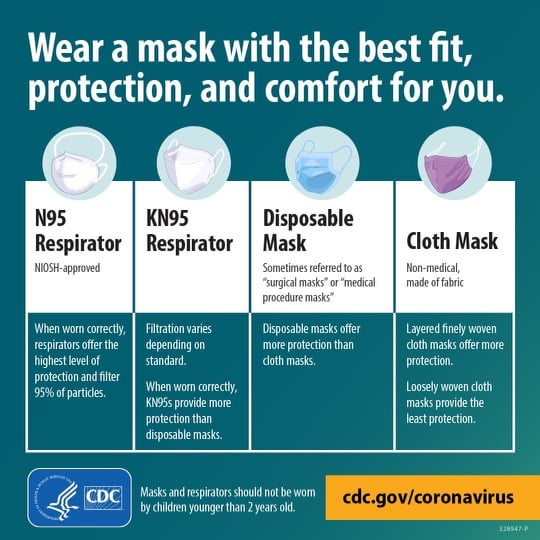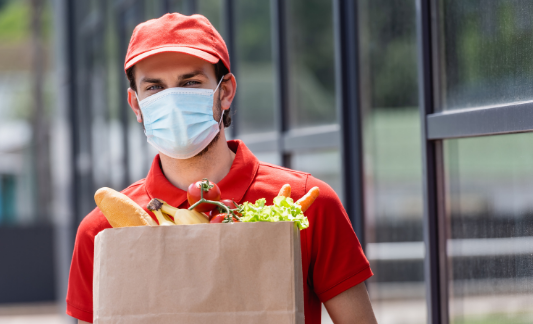Help Isom IGA recover from devasting floods

COVID-19 |
6 min read
Independent Grocery & Vaccines: What Now?
Written by Jessica Vician
Jan 19, 2022
For retailers who were already facing historic staffing challenges, a federally mandated vaccine requirement could have created even more hiring issues. The Supreme Court’s recent ruling to suspend enforcement of the U.S. Occupational Health and Safety Administration’s (OSHA) COVID-19 vaccination and testing Emergency Temporary Standard (ETS) relieves some of the short term pressure.
Under the mandate, companies with 100 or more employees would have been required to ensure employees are fully vaccinated against COVID-19 or submit to weekly testing. “The ruling is a great relief for our industry as it staves off a burdensome mandate that would have created further disruptions and impaired our members’ ability to properly serve the needs of their communities,” says Greg Ferrara, NGA president and CEO.
What the ruling does not do is relieve the responsibility we have to make our stores safe, IGA CEO John Ross says. "From the beginning IGA and our partners NGA and FMI have supported the vaccine and other measures that protect our employees and our shoppers. That hasn't changed. We still need mask policies, we still need employees to get vaccinated, and we still need to take all the precautions we possibly can to stop virus. But these precautions can't cripple the businesses so important to our independent grocers, their employees, and the people and communities we serve. More than two years into the pandemic there should be ways to better help retailers and employees protect themselves and others. Reasonable, consistent, and easily implemented federal and state regulations and an abundance of tools like low-cost or free tests and masks would solve so many of the problems our retailers and store teams face."
So how do retailers move forward while juggling changing guidance, polarizing opinions about vaccines, and local versus federal mandates? Keep reading for a breakdown.
State and Local Rules Still Apply
To start, all employers should default to their local guidelines or mandates. "The Supreme Court ruling does not block states from implementing their own private sector vaccine-or-test requirements," NGA's Senior Director of Government Relations Robert Yeakel adds.
Need to find your state's requirements? Use this state-by-state COVID-19 requirements resource, and check with your local health department for county guidelines.
Follow CDC Guidance
Even without a federal vaccine mandate, employers must still make reasonable efforts to protect their employees from the pandemic hazards, per the OSHA Act of 1970's General Duty Clause, which requires employers to provide a work environment "free from recognized hazards that are causing or are likely to cause death or serious physical harm."
To ensure you have created as safe a work environment as possible, use the CDC's COVID-19 workplace prevention resources, as well as OSHA's guidance on mitigating and preventing the spread of COVID-19 in the workplace resources.
Masks
The first place to start? Masks. Research shows that N95 respirators offer the highest level of protection when worn correctly, filtering 95 percent of particles. These are no longer in short supply, like they were at the beginning of the pandemic, but there are many counterfeit products sold, so look for NIOSH-approved brands. Refer to the below graphic from the CDC on the protection offered by each type of mask.

Isolation & Quarantine
With a daily average of 756,752 cases at press time, and many unreported due to at-home testing, COVID-19 is still spreading rapidly, which is creating a strain on employers with many workers out sick. Due to evolving research, the CDC has updated their isolation and quarantine recommendations.
People should "isolate" if they have tested positive for COVID-19, regardless of symptoms. This means they stay home for at least five days after testing positive. After Day 5, if they are fever- and symptom-free (or fever-free with improving symptoms), they can return to work wearing a mask at all times (never removing it to eat or for any other reason) for the next five days. They must avoid travel and high-risk individuals.
"Quarantine" refers to what people should do if they are a close contact of an infected person—less than six feet away from an infected person for a cumulative total of 15 minutes or more over a 24-hour period (for example, three individual 5-minute exposures would total 15 minutes of exposure).
In this case, recommendations differ based on vaccination levels. People do not need to quarantine after close contact with an infected person if:
- They are up to date with COVID-19 vaccines
- They had confirmed COVID-19 within the last 90 days (they tested positive using a viral test)
If they do not fit the above criteria and had close contact with an infected person, then follow these guidelines for quarantine from the CDC:
- Stay home and away from other people for at least 5 days (Day 0 through Day 5) after last contact with a person who has COVID-19. The date of exposure is considered Day 0. Wear a well-fitting mask when around others at home, if possible.
- For 10 days after the last close contact with someone with COVID-19, watch for fever (100.4°F or greater), cough, shortness of breath, or other COVID-19 symptoms.
- If they develop symptoms, get tested immediately and isolate until they receive the test results. If they test positive, follow isolation recommendations.
- If they do not develop symptoms, get tested at least 5 days after the last close contact with someone with COVID-19.
Regardless of vaccination status, every person with a close contact should wear a well-fitting mask around others for 10 days and get tested at least five days from the last exposure.
Prioritize Health & Safety Through Vaccinations
While many independent retailers have reported employee resistance to the COVID-19 vaccines, they remain the safest way to stay healthy, and are especially crucial in preventing hospitalization for COVID-19. In fact, the vaccines are between 85 and 96 percent effective for preventing COVID-19 hospitalizations in the U.S. (Johnson & Johnson's Janssen vaccine 85 percent, Pfizer-BioNTech vaccine 91 percent, Moderna vaccine 96 percent), per the CDC.
For that reason, IGA and NGA encourage retailers to continue to provide resources to employees on the importance of vaccination.
“Helping your employees understand the vaccine is important to both the business, their safety, and the safety of shoppers is paramount right now,” says IGA CEO John Ross. Here are some tip for addressing vaccination with your employers.
1. Use Facts & Honesty
Approach any conversations with employees about the vaccine with care, as it is ultimately up to the individual whether or not to get vaccinated. "Being open, transparent, and ready to answer questions are going to be key to supporting employees in their decisions to get the COVID vaccine," says NGA's Senior Vice President of Communications and External Affairs Laura Strange. "Given the essential nature of the supermarket industry, it is critical to get as many grocery employees as possible vaccinated against COVID-19. Employers should lean on local public health officials as well as the CDC to help inform their employees about the effectiveness of the vaccine and to build trust.”
2. Lead By Example
If you're not already vaccinated, now is the time to get it. Last year, Jennifer Bosma, owner of two Harvest Market IGA stores in California, shared her experience with her team to help alleviate fears and set a good example, in addition to sharing CDC, Department of Public Health, and local hospital information. She says those efforts helped boost confidence in the vaccine. “We had about 60 percent of our eligible employees saying they’d get the vaccine.”
3. Offer What Your Employees Will Respond To
When the vaccines were first available, many retailers offered vaccine incentives, from time off for getting the vaccine and recovering from it to $100 gift cards and raffles to win larger prizes. But many employees weren't interested, no matter the incentives. "If you think incentives will help increase vaccination rates among your employees, by all means, please offer them if you are able," says IGA CEO John Ross. "Otherwise, I'd encourage you to try what you think is best for your associates. Some retailers with vaccine-hesitant employees have told me that they share data from their local health departments on hospitalizations in vaccinated versus unvaccinated individuals, relying on hard facts instead of messaging."
As COVID-19 continues to adapt and spread, employers in any county, state, and country must do what they can to protect their employees and customers by following their local guidelines. By doing so, they can continue their mission, as Ferrara says. "Independent grocers remain focused on doing what they have done since day one of the pandemic, providing their communities with access to food, essential products and other vital services."
You May Also Like
These Stories on COVID-19
Mar 9, 2022 10:53:54 PM |
2 min read


No Comments Yet
Let us know what you think